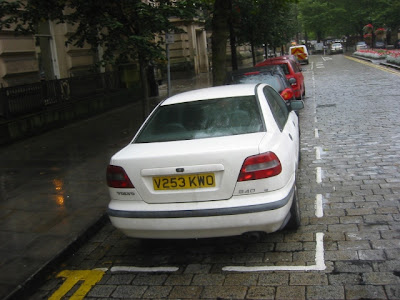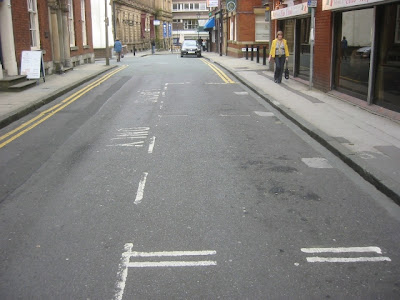Follow this Link to Bolton News front Page sat 27th Oct 2007
http://www.theboltonnews.co.uk/search/display.var.1791050.0.0.phpAs a signing consultant working in the private sector, my work primarily involves me being an independent expert witness to assist the Courts.
I am continually called upon to prepare reports into the legal requirements for, and the legitimacy of signing regimes. These reports are primarily created for Court prosecutions and/or parking civil proceedings/parking appeals.
I continue to be astounded by the actions, or should I say inaction of local authorities to comply with simple and basic Statute Law, the Regulations and the directions of the Secretary of State for Transport.
The legislation is often referred to by council officers as too complicated. There are basically only four diagrams/pictures of parking bays to follow and two diagrams for yellow lines. These are simple and if too complicated, technical drawings are free to download from the DfT website.
Provided the quote by the press is correct, once again we have a highway authority with a legal duty to only employ prescribed traffic signs stating they are writing to the Government for clarification on what they continually quote as being: guidance.
There is no guidance that requires clarification and, once again the public are being spun.
Any guidance documents issued by the Department for Transport always defaults to the legislation, in this case, the contents of the Traffic Signs Regulations and General Directions 2002.
As such the legislation is binding and the use of any 'sign' not within the publication, without the written site specific authority the Secretary of State for Transport is illegal and the authority is simply acting beyond its powers (for those that doubt read Chapter 1, the Traffic Signs Manual, Part 3, the Legal Responsibilities for Signs at point 1.18).
Therefore the use of anything that does not meet the precise requirements of signing law is 'non-prescribed' . Additionally, de minimis (minor deviation from law) is often quoted, however, the Regulations deal with de-minimus in the permitted variations and Regulation 12. There is nothing beyond that, as Lord Parker found in the High Court ruling in the case of Davies v Heatley 1971
Having worked with Philip Somorakis and also formerly as a Police Officer, I can confirm that the criminal offence of misfeasance in public office should be dealt with by the Police and, additionally should anyone care to look at the CPS website you can see the additional criminal offence of misconduct in public office.
Do not be fooled into believing that the council officers do not understand the legislation, all signing 'law' is written for engineers to both understand and apply. National conferences and seminars are held to assist, I was the opening speaker at the IHIE Conference this September, talking about this very subject.
The public should also consider that their councils have legal departments and hold copies of all the legislation, plus, as their comments in the paper show, they have access to free access to additional guidance by the Department for Transport, Westminster, London.
If anyone is actually interested in understanding the legislation, what signing should look like and also the
consequences of signing inaction they need look no further than the advice pages of my website:
rmbconsulting.co.uk












